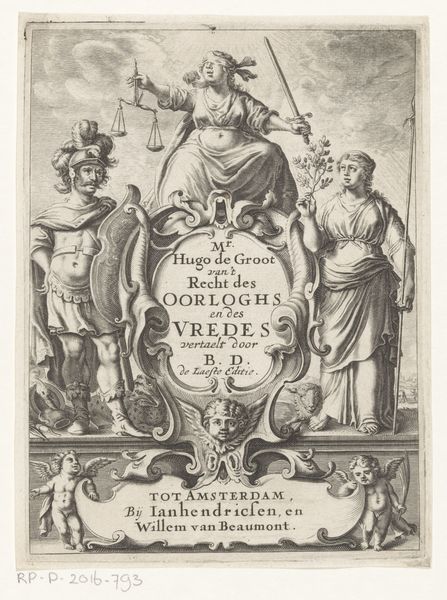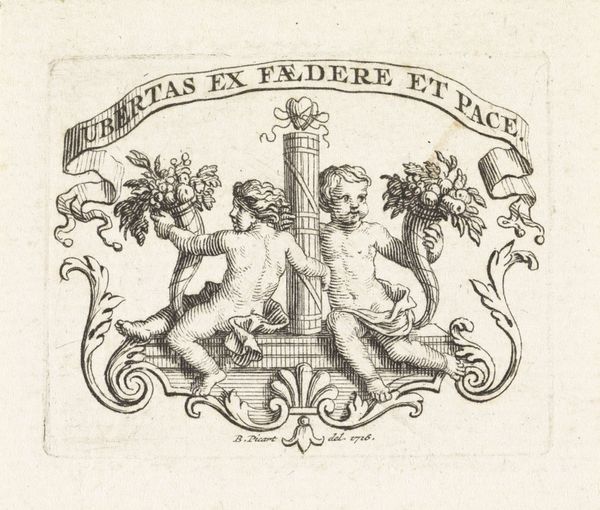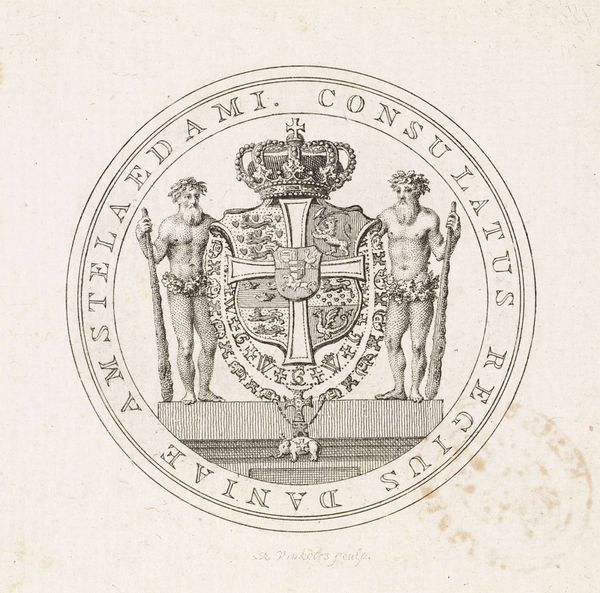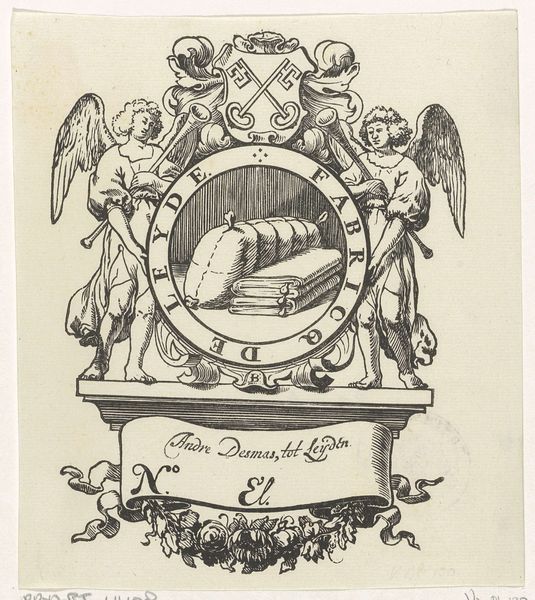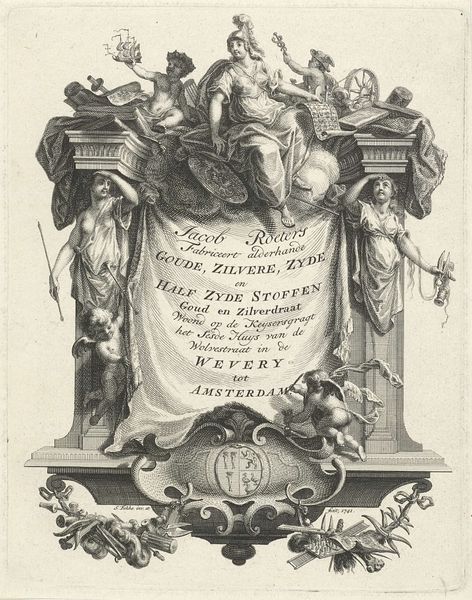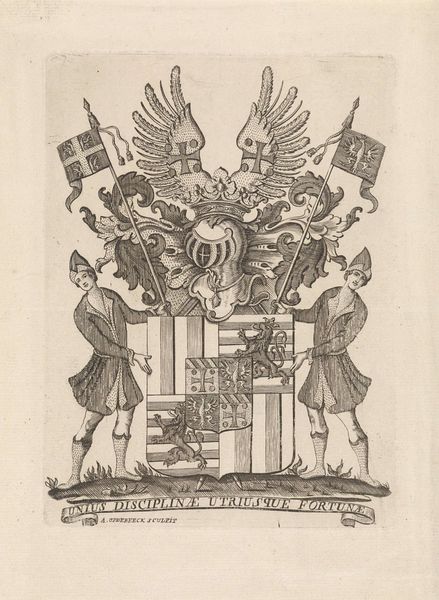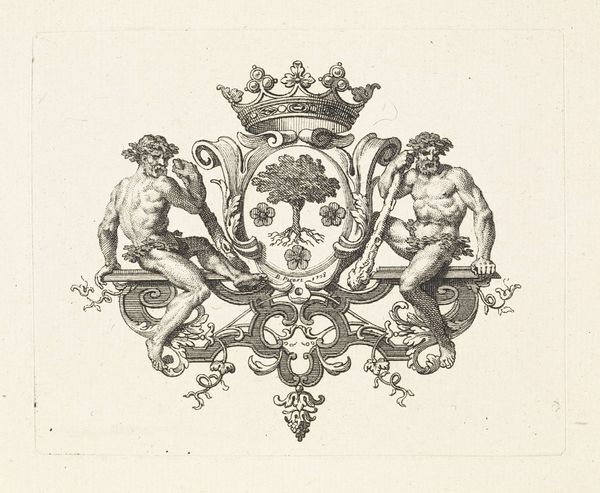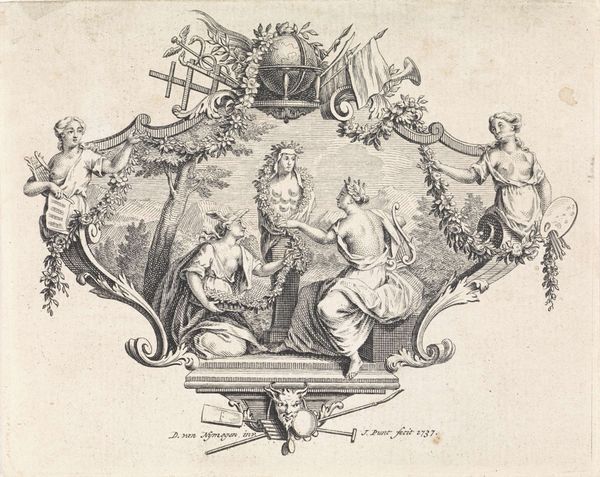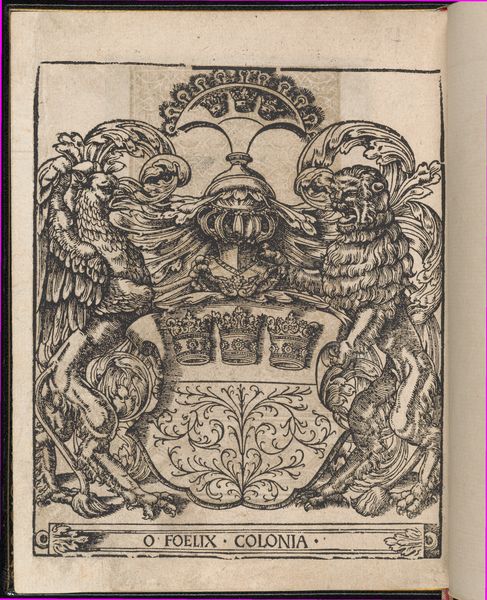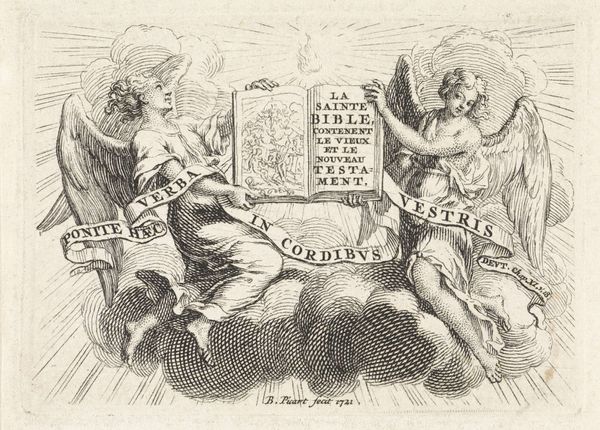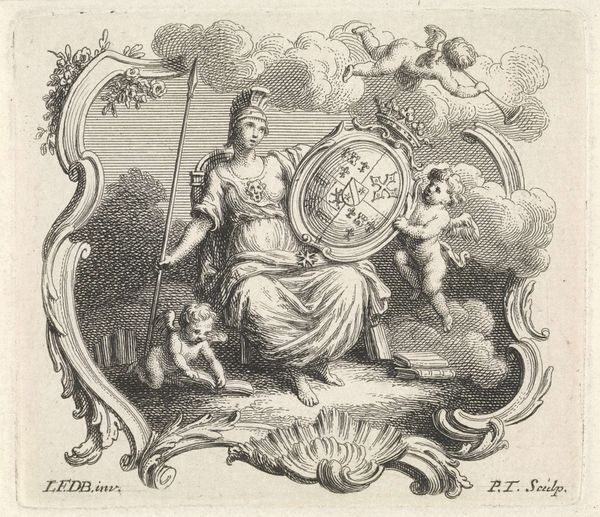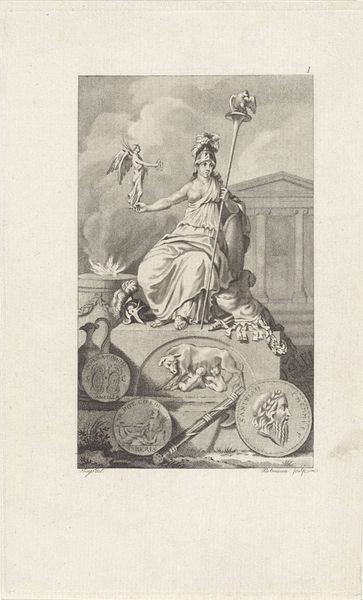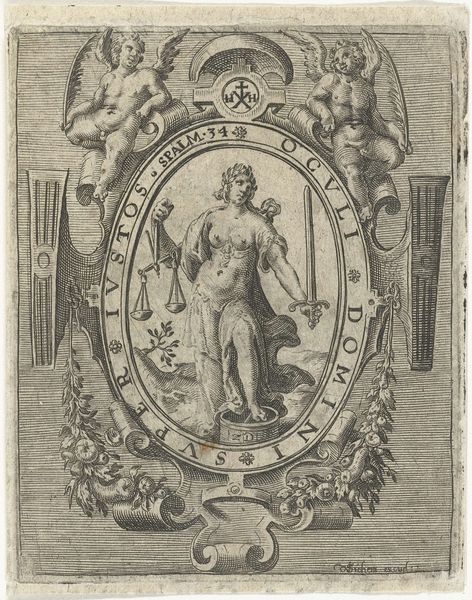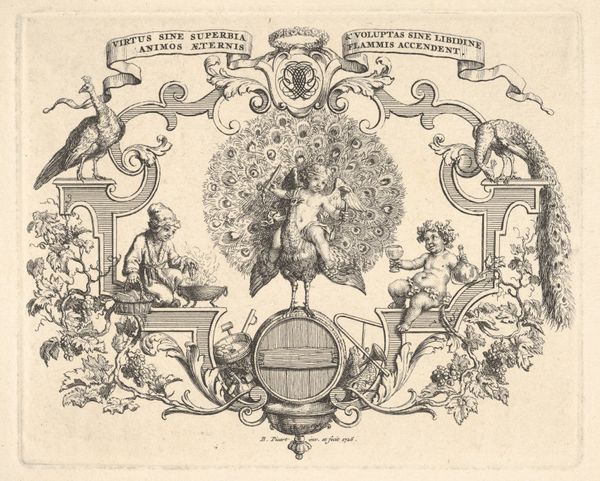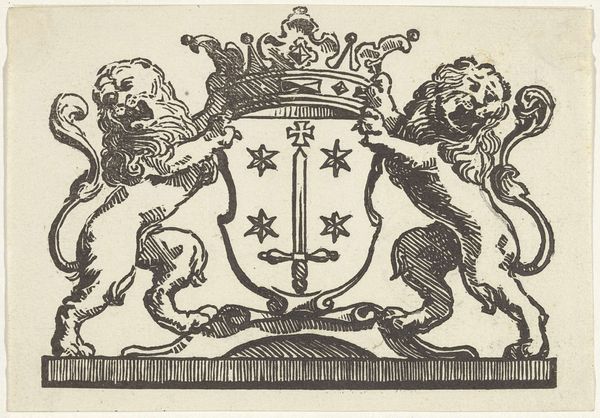
drawing, print, engraving
#
drawing
#
allegory
#
baroque
#
pen drawing
# print
#
pen sketch
#
old engraving style
#
line
#
engraving
Dimensions: height 50 mm, width 63 mm
Copyright: Rijks Museum: Open Domain
Editor: Here we have an engraving titled "Ornament met allegorie op eenheid," or "Ornament with allegory of unity," created sometime between 1683 and 1783 by an anonymous artist. It reminds me of an emblem, with its symbolic figures. What do you see when you look at this piece? Curator: Immediately striking is the intricate line work. The composition adheres to a strong symmetry, divided centrally by what appears to be a fasces, symbolizing unity and power. The cherubic figures, or putti, positioned on either side, contribute to this balanced construction. Notice the scales held above each cherub; these are in perfect equilibrium, a crucial element of the overall formal arrangement. Editor: Yes, the balance is undeniable. The objects held by the putti seem significant too. Are these visual keys for deciphering the engraving’s message? Curator: Precisely. Focus on how the artist juxtaposes these objects. The tools the cherubs use invite us to think about industry, commerce, even perhaps learning and knowledge. They function almost like linguistic signs – elements within a visual language. Now, consider the 'frame' around the composition; do these add or detract from the central scene, and why? Editor: The frame, a cornucopia overflowing with coins, seems almost separate from the more formal central element, lending richness, I suppose. And you see this design from a formalist perspective, primarily focusing on its structure? Curator: Indeed. One decodes a work by paying close attention to form. The line, composition, balance, symmetry – these are entry points into grasping what this emblem wishes to convey about 'unity'. What initially appeared merely decorative reveals a complex system of signs, waiting to be unlocked. Editor: So, form precedes function, or, at the very least, guides us towards it. Thanks, I'm looking at it completely differently now!
Comments
No comments
Be the first to comment and join the conversation on the ultimate creative platform.
